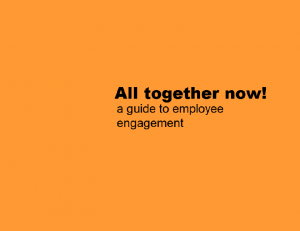Today we have a guest post from Kevin Eikenberry, all-around brilliant guy and author of the new book From Bud to Boss. Let’s roll!
Most people value and admire consistency. From Cal Ripken, Jr\’.s consecutive game streak in baseball, to business longevity, to celebrating anniversaries and even birthdays; humans look for consistency, for plans and for stability. Most people see those traits as good things.
Compounding the interest and desire for consistency is the favor found in traditions. The meal you always have on a specific holiday, the things you do each Spring, fireworks on the Fourth of July in America, the list could go on and on…
There obviously are virtues to consistent performance, reliable processes and unchanging traditions. Yet, as with most everything in life, there is a flip side to these virtues too – the vices of these hallowed traditions and consistent actions.
You might be thinking… what could possibly be wrong with apple pie on my birthday or subscribing to the same magazine for 25 years or that popular annual Customer promotion?
While there might not be anything “wrong†with it; I\’m curious, have you considered that you might like another flavor of pie (or a cheesecake!) better? Or that maybe there is another magazine that better addresses your specific interests (which likely have drifted over 25 years), or that an entirely different promotion might do even better?
When you are blindly tied to consistency and tradition these vices can keep you from thinking, put you at risk of being out of step, expose you to settling for just good when something better exists, and preclude you from asking questions (the kinds of questions that could change everything for the better).
If you buy my idea that there are two sides to the consistency coin, then let\’s talk about what leaders can do to most effectively deal with – and take advantage of – both sides of that coin.
Balancing the Virtues and Vices
Human inclination is to “keep the tradition alive;†so, the advice that follows is more about opening your mind to the possibility that you could change that tradition. Having said that, realize these steps may leave you with the decision that the tradition should remain and continue to be cherished for what it is.
That\’s perfectly fine and is all part of the balance itself. You must be willing to look critically at everything, and then determine what can change and what must remain.
Five steps to consider
Identify the “sacred cowsâ€. What are the things you don\’t ever look at? What are the things you never question, that you always do, or are considered politically “untouchable†in your organization? When you make this list you have taken the first step towards finding a greater balance – and possibly finding a tremendous opportunity for improvement.
Respect, but inspect. Each of those time honored procedures or traditions has value – or did at one time. As a leader, recognize the emotional connection or affiliation people may have towards these processes or approaches. Even if you expect to find change needed, respecting these practices is the best first step. This respect should be shown and felt as you inspect these processes and events for possible changes.
Do a relevancy check. Does the event, process or tradition support the current goals of your organization? Goals often (and should) change over time, and so it is appropriate to consciously take time to align all activities to the goals of the organization. If the tradition or process in question doesn\’t support your current organizational goals, why does it remain?
Rededicate your efforts. Your analysis may not produce a black and white answer (like this is good and should be kept, or this needs to be eliminated). Regardless of the complexity, the goal is to decide and act. Perhaps the tradition needs to stay; perhaps it needs to be adjusted; or perhaps it is time to recreate, re-fashion or more drastically change it. Whatever the decision, rededicate your efforts to making the process or tradition highly valuable and valued.
And, if your analysis determines that some change is required, remember to . . .
Recognize deeper challenges. If you are making changes to a long-held tradition, recognize that the resistance to change will be significant – it will perhaps even surprise you. In this case remember to be patient, to be respectful and to talk about the ‘whys\’ of the change early and often.
I love traditions as much as, if not more than, most. AND, I love change and the opportunities it brings. As a leader you must find this balance for yourself and your organizations.
Potential Pointer: Consistency and traditions can be of great value. They also can be a challenge when they obscure or work against your overall goals. As a leader it is your responsibility and opportunity to find the balance between change and consistency – choosing each at the appropriate time.
Kevin Eikenberry is the author of From Bud to Boss, a book for leaders transitioning into their new roles. If you are a new leader or know one, grab a copy of the book today!


